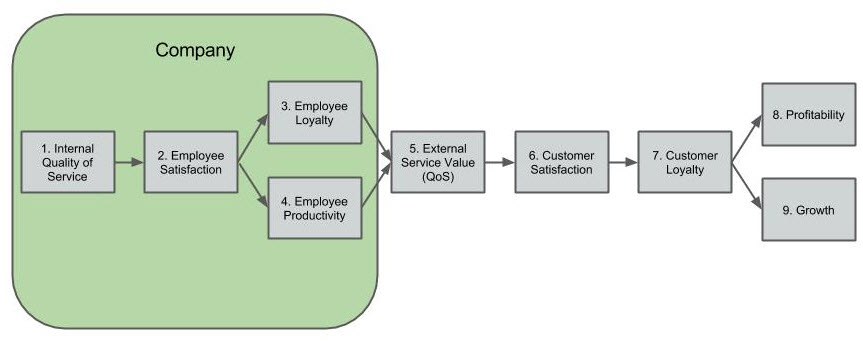Service Model
Contents
Service Models, Profitability and Revenue Growth
Growth and profitability in any organization is driven by satisfied customers. Whether you're an airline, a cable company, a restaurant, or provider of insurance, some percentage of the perceived quality of your product is tied to the associated service provided. The degree to which customer satisfaction is tied to your product vs. the quality of service provided naturally varies from industry to industry. However, in the tertiary sector of the economy, or the service industry, clearly the service provided will influence not only customer satisfaction, but customer loyalty, which drives growth and profitability.
None of these concepts are new; companies recognize that loyal customers can heavily influence profitability and growth. Companies go to great lengths to understand their customer satisfaction (or C-Sat) scores, using various methods. Net Promoter Score (NPS) is a common method in use today, in addition to Voice of the Customer and general satisfaction surveys. But while organizations are commonly collecting these external scores, most organizations fail to take "external satisfaction" and focus on the complete service model, which starts with internal quality of service.
Internal Quality of Service
When I reference internal quality of service, I am speaking of attributes associated with an employee's feelings they have toward their job, their colleagues, and their company. The notion of employee happiness or satisfaction is often either under-measured or overlooked completely. Many companies conduct an internal employee satisfaction survey annually, but rarely is internal employee satisfaction measured with the same rigor and frequency as external customer satisfaction. And elements that contribute to positive employee feelings are commonly first to go when budgets get tight and cost cutting measures are being pursued. Company picnics, after work events, recognition programs, reduced on-site food services; all are cut without full understanding of the impact to the service-profit chain.
This disconnect between measuring and managing internal employee satisfaction and external customer satisfaction is a break down in what is commonly referred to as the Service-Profit chain.
Service-Profit Chain
The Service-Profit chain is a simple blueprint which can be utilized in any service-based industry, and applies to all elements of operations. Whether you are running an inbound call center, an outbound sales organization, a back-office operation or an IT department, the Service-Profit model provides a solid foundation to increase profitability in your company and ultimately spur revenue growth. Originally published in 1994, the Service-Profit model provides any level of management an approach that shifts focus inward to drive the output - improved C-Sat, profitability and growth.
I've outlined it in 9 steps below, which I'll expand on individually:
1. Internal Quality of Service
Are your employees satisfied with the technology they leverage to conduct their job? Do they feel empowered? How would they speak when asked to comment on the personal support they receive on the job? These are just a few questions that lead to determining your internal quality of service. Internal quality of service is the starting point in the service-profit chain, and what I position as the most important point of focus when an organization desires to be a world class brand.
My specific blueprint for a world class service model ties Internal Quality of Service to the Happiness Principle - which leverages positive psychology science to form a basis for specific programs any organization can leverage to drive the end result - improved profitability and revenue growth.
2. Employee Satisfaction
Employee satisfaction is a straight-forward concept, and something that can be easily base-lined and measured. How satisfied your employees are can be correlated to external customer satisfaction, given that a sound selection criteria and methodology are implemented for both. In order to leverage the service-profit model successfully, employee satisfaction needs to not just be measured frequently, but analyzed and tied back to the internal quality of service link. Employee satisfaction also links directly to loyalty, the next step in the chain.
